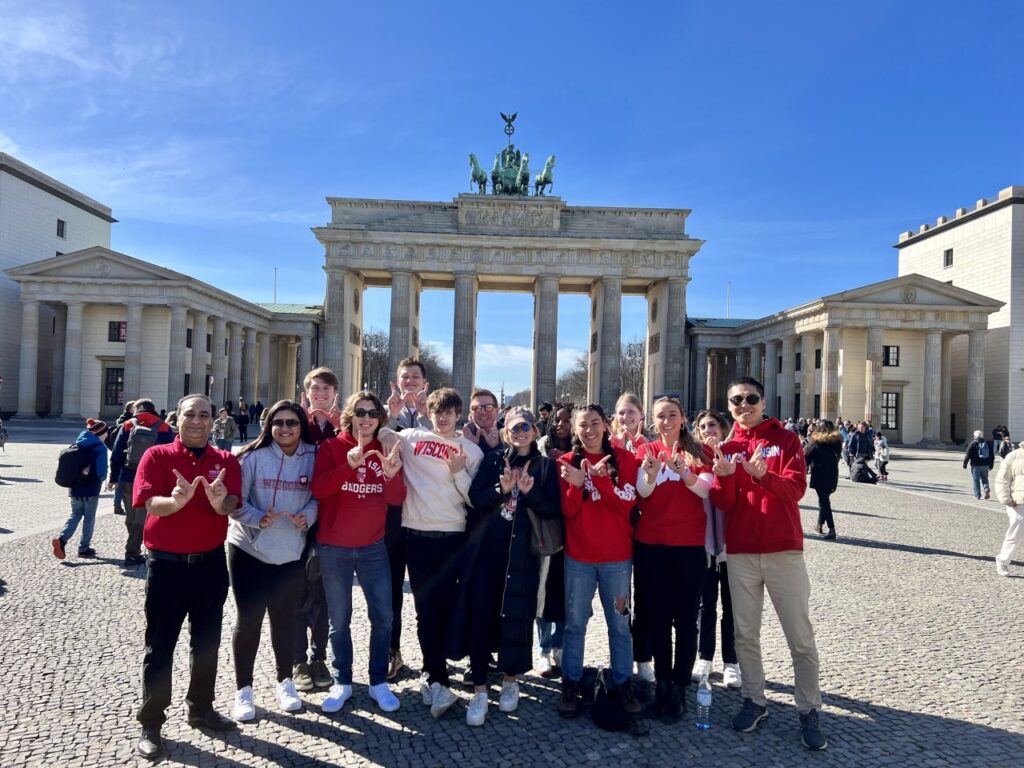Over spring break, 13 Wisconsin Real Estate graduate students traveled to Berlin, Germany for a 7-day study tour to gain real-world experience and insights into the political, legal, economic, environmental and cultural dimensions of doing business abroad. During the visit, students met with brokers, developers, money managers, investors, lenders, attorneys, and alumni to gain first-hand insight into these emerging real estate markets. They also packed in some cultural highlights, including a visit to the Brandenburg Gate and the Holocaust Memorial, as well as observing live session of the German Parliament.
Day One – Arrival March 12th
On March 12th, the graduate students (Grace Atia, Grant Behnke, Zach Brenner, Victoria Clarke, Caroline Draver, Jesper Freimuth, Janay Hull, Nikki Kern, Bree Lamee, Hwajun Lee, Connor Stickels, Margeaux Wysockey, William Zordani) and trip leader Arif Qureshi arrived in Berlin to begin their study tour.
The students spent the first afternoon exploring the local area, Hackescher Markt, located in the Mitte district of Berlin. The area featured a local market on the weekends and had many shops and restaurants on the surrounding streets. The group had dinner at Sisal, an Italian restaurant, where they reviewed the itinerary and guidance for meetings and cultural visits for the trip.
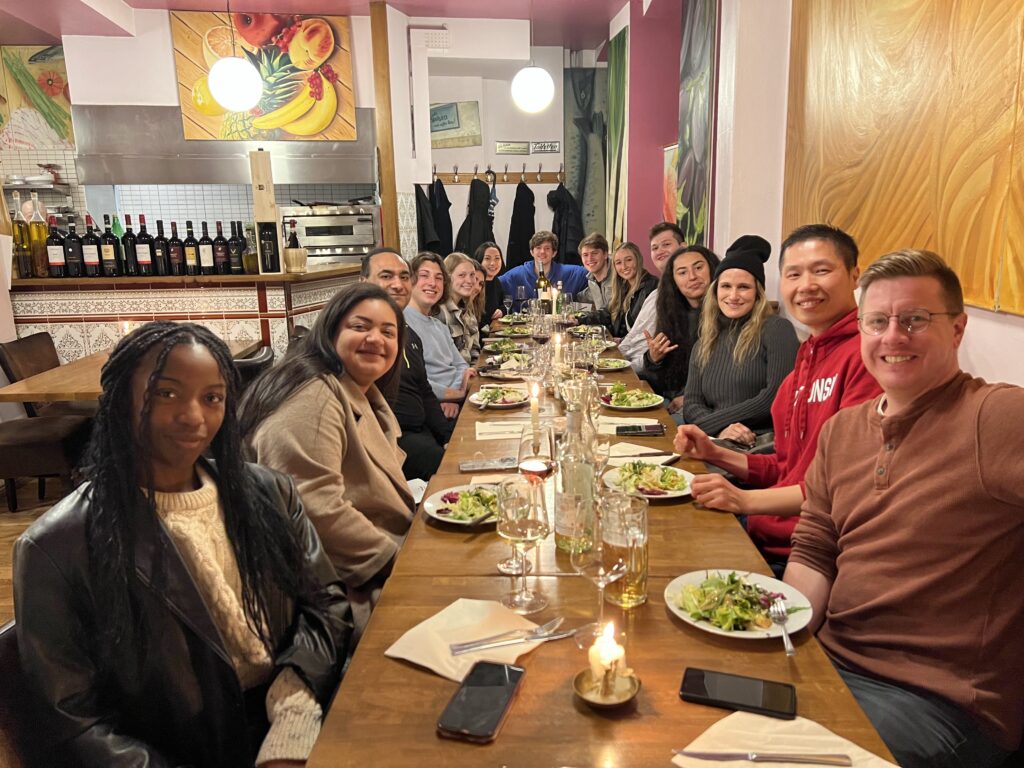
Day Two – Opening Dinner and Berlin Real Estate Debt Law Experts
Day Two began with breakfast at the hotel where the group discussed the plans for the day, Berlin has excellent public transportation infrastructure which allowed the group to travel all over the city with ease. To understand the city’s design, the group visited the three major business districts located downtown.
The first is Alexander Platz which features the Berlin TV Tower, The World Time Clock, and a shopping district. The second destination was Potsdamer Platz, another business district that featured retail and office spaces. The largest attraction is the Sony Center, an open-air mixed-use development. The center was under renovation during our visit so were unable to tour the facility. The final business district the group visited was Kurfurstendamm Platz, more commonly referred to as Ku’damm. This area differs from the others by having predominately luxury retail.
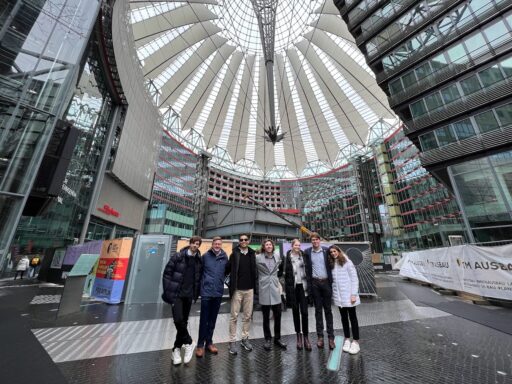
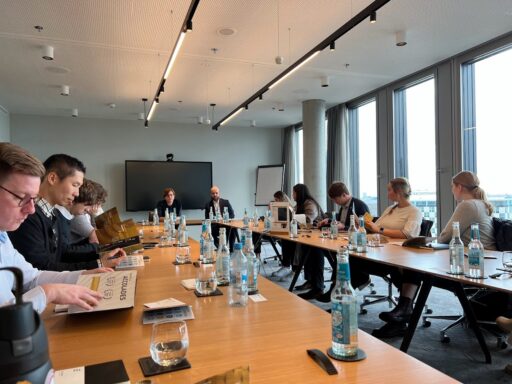
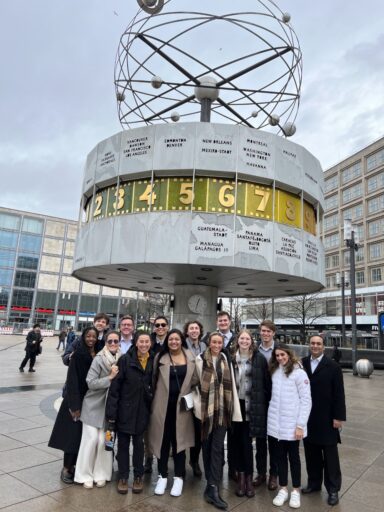
Following the visits to the major business districts across Berlin, the group met with an international law firm that specializes in commercial real estate. The group presenting at the firm provided insight into the differences between the United States and German debt markets, as well as the alternative lending market. The students learned that compared to U.S. lenders, German lenders are more willing to push back maturities and offer extensions to avoid mortgage defaults. Following this meeting, the group had a dinner to close the night at Café Hackescher Hof, where everyone was able to try a traditional Schnitzel dish.
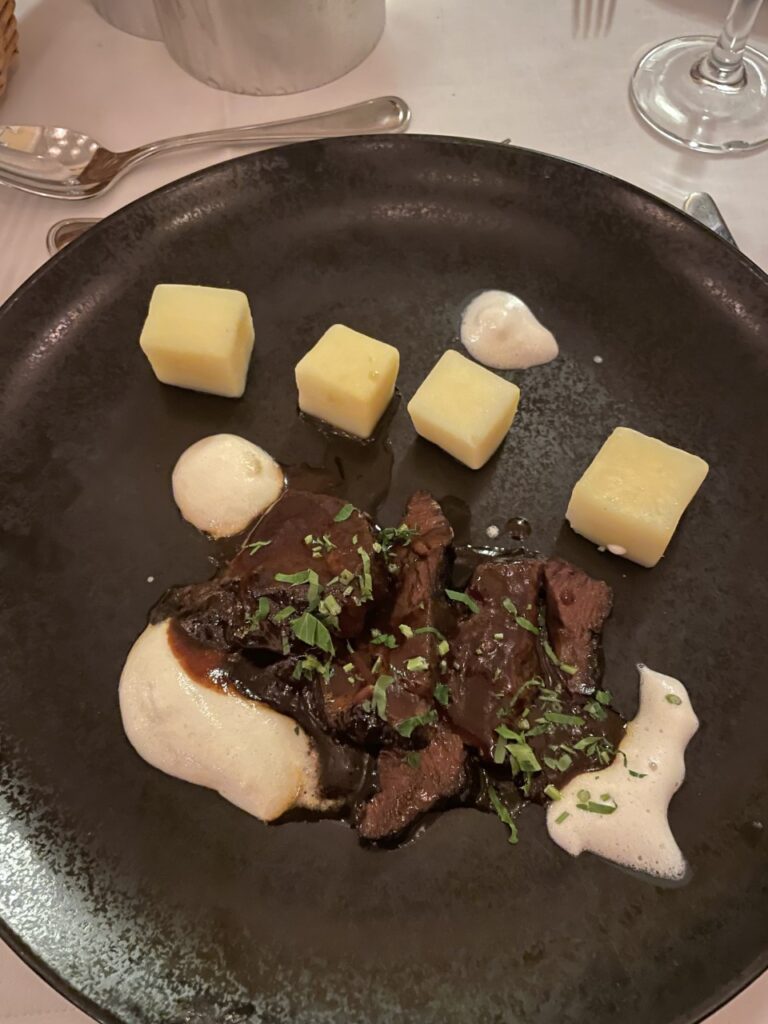
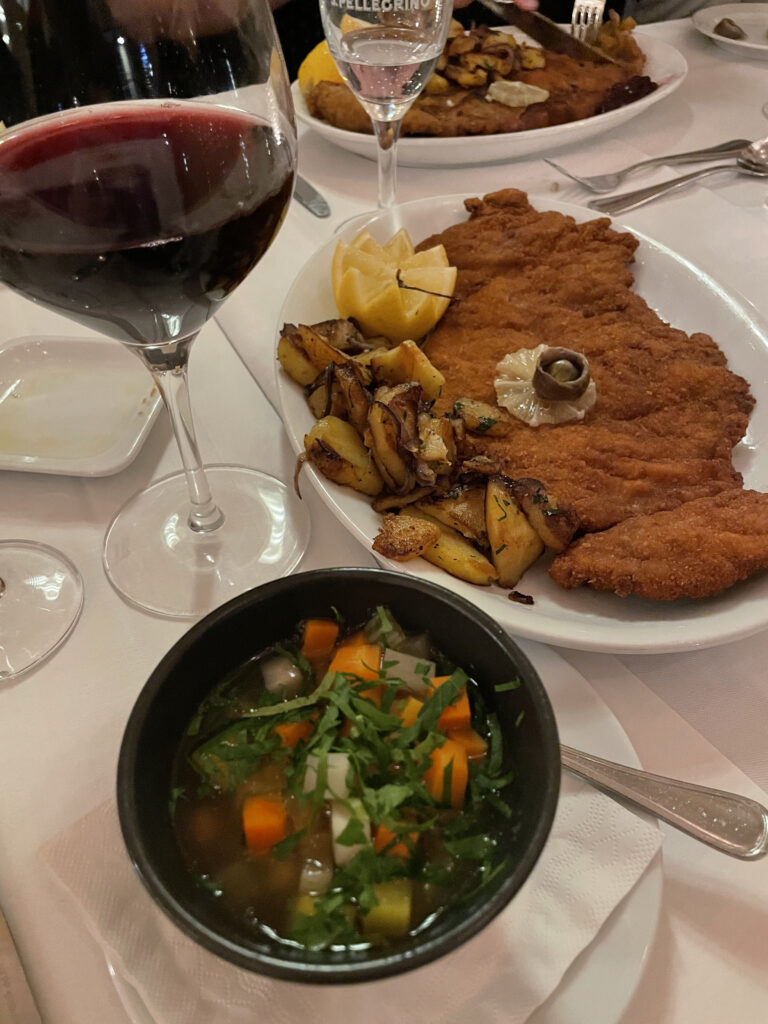
Day Three – Capital Markets & Brokerage Meetings
On day three the group began their day at a global brokerage firm and met with an associate director of Capital Markets. In this meeting, we discussed the major real estate markets in Germany, and the demand driver differences between the U.S. We also discussed the headwinds facing commercial real estate in Europe. One of the biggest differences between the U.S. market and Europe is the office market. Stay-at-home has not had the same staying power as in the U.S. Nearly everyone is back in the office in Europe. The big demand drivers for space in Berlin are Government (Nation’s Capital), Healthcare research, pharmaceuticals, telecom, media, and tech.
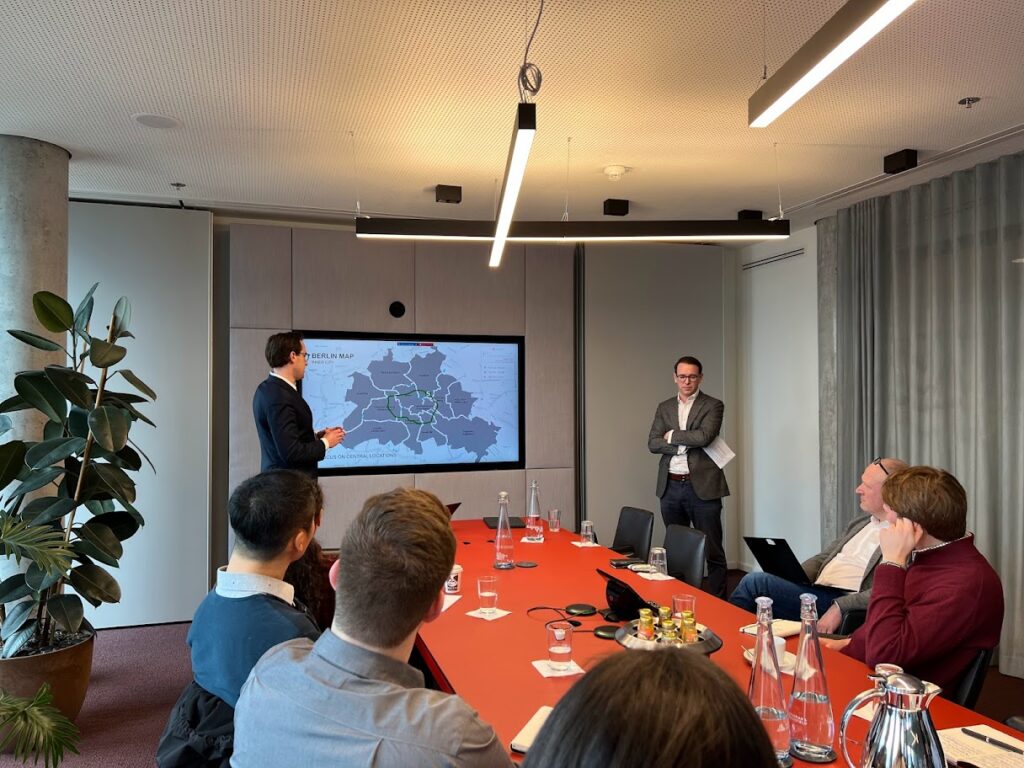
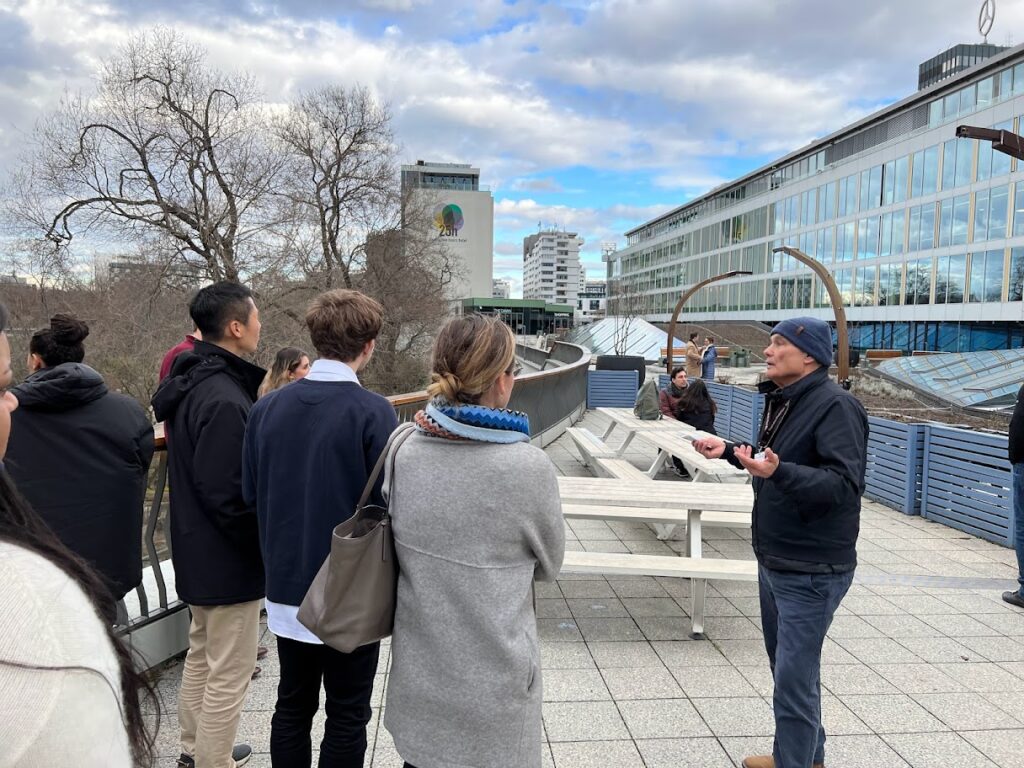
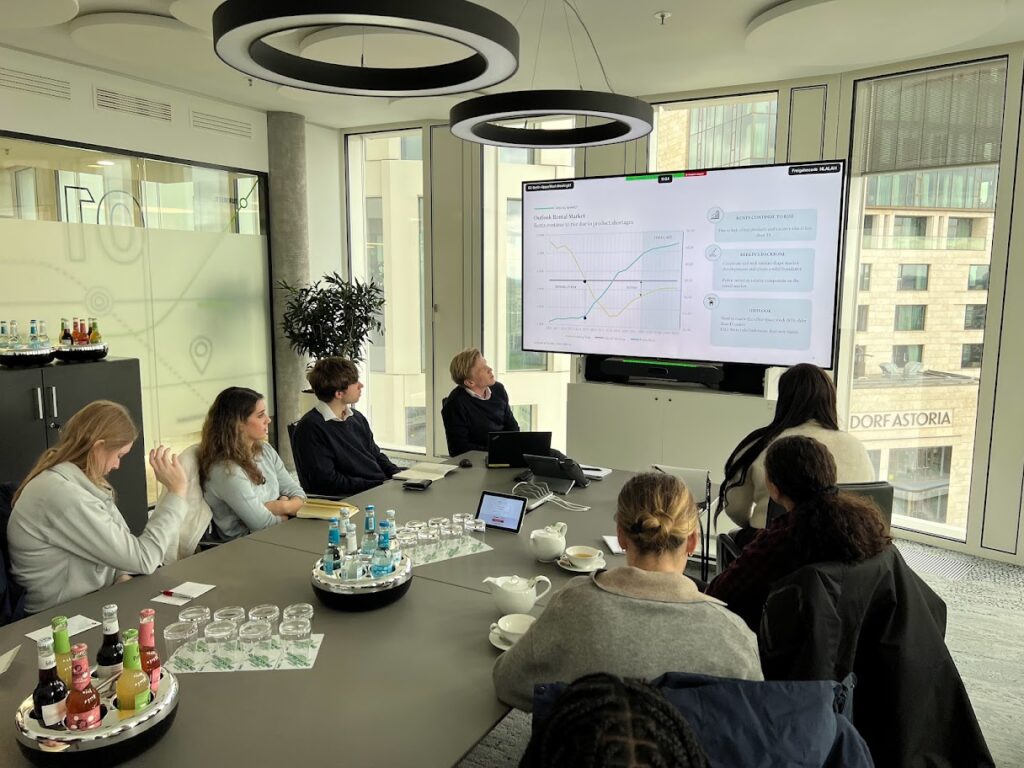
Following the group’s first meeting, they then went to Bikini Berlin a mall near the Ku’damm district. This mall is unique in the fact that the site borders a zoo, and you can observe exhibits while within the mall. A big attraction in the area is a rooftop bar, called the Money Bar, located at a nearby hotel. From here people can overlook the zoo and bordering park.
After lunch at the mall, the group met with another global brokerage firm. In this meeting there was more discussion of the differences in markets, the group learned the Berlin office market has a vacancy rate of 3.5%, far different from U.S. markets. We also discussed the effects of the EU’s ESG policy on the real estate markets. Leading ESG properties can achieve a 4% premium on rents as corporations value the ESG features greater. The group was able to obtain a strong understanding of the differences between German and U.S. markets through the meetings that took place today.
Day Four – Development Tour & Architect
Day four started with the group heading towards an active multifamily development near Victoria Park in Berlin Kreuzberg, the developer providing the tour was a local property developer who focuses on sustainable modular-timber construction. The project itself was the rehabilitation of an existing apartment building with the addition of seven new residential units intended for sale. The developer explained the use of modular construction, the seven new units all featured a modular kitchen unit that was dropped in by crane. It was a unique experience to see how units are designed in Berlin compared to the United States, the biggest difference noticed by the students was the minimalistic kitchens.


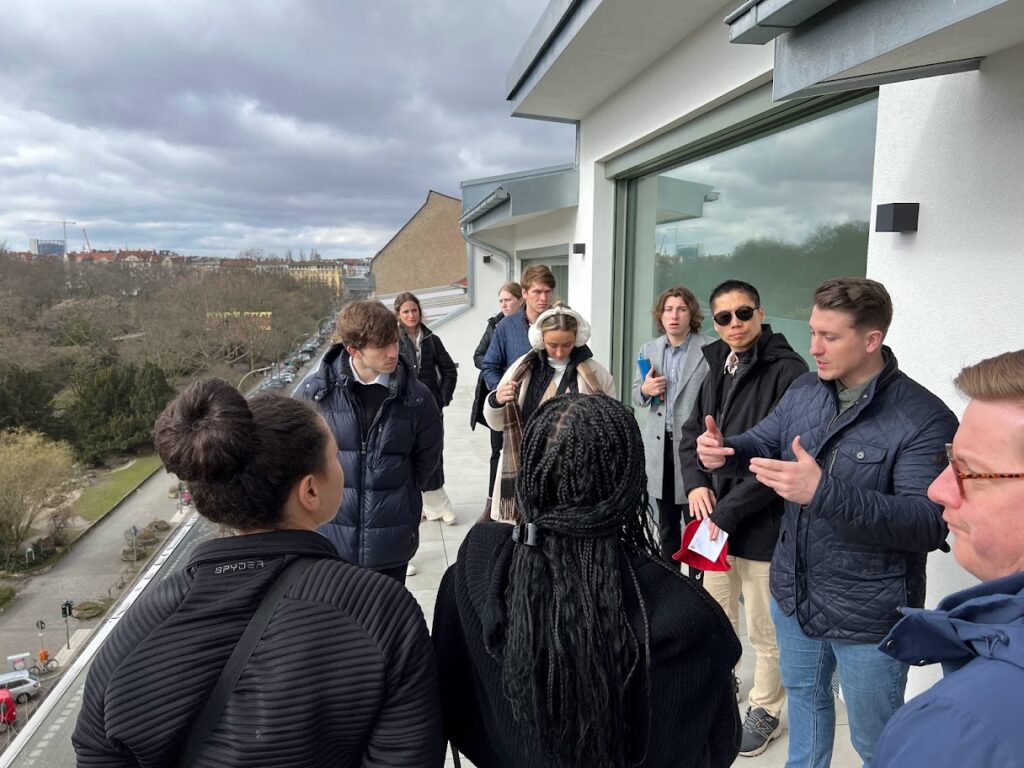
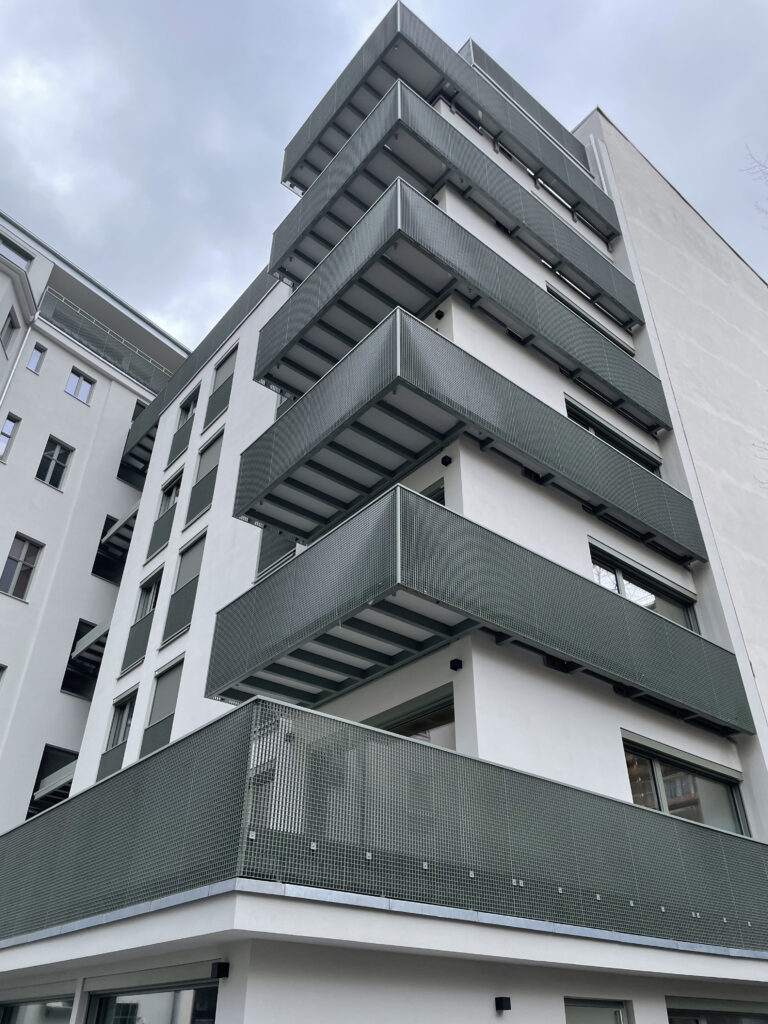
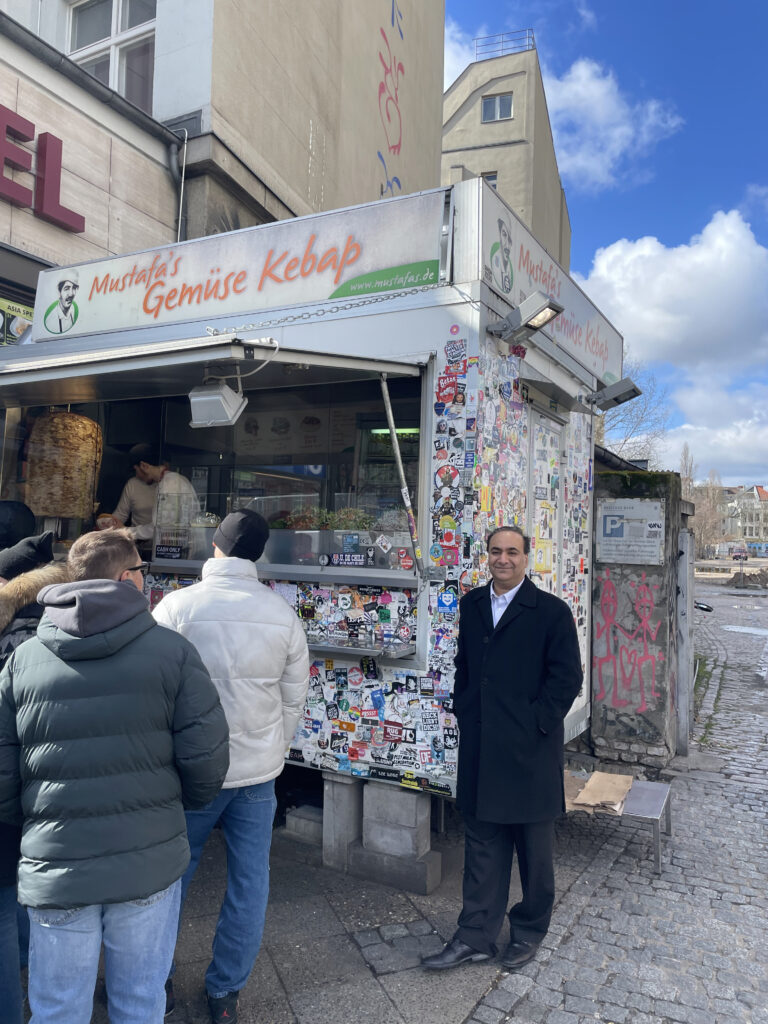
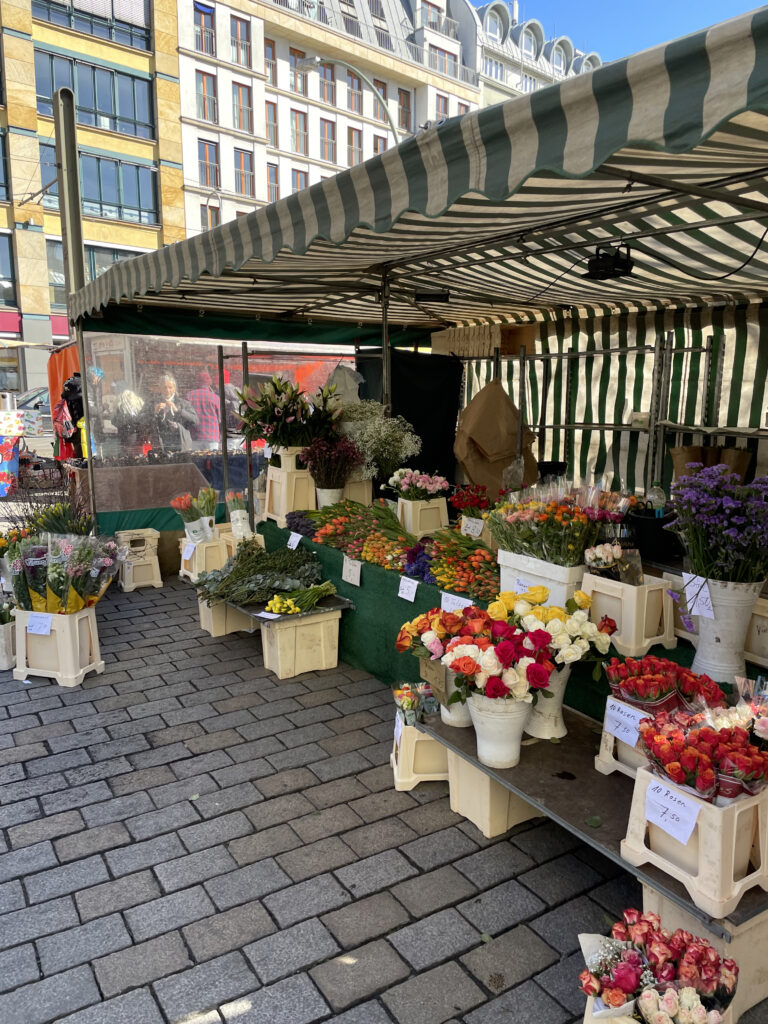
Following the development tour the students had the opportunity to visit Museum Island, a collection of five different museums in historic Berlin buildings built between 1830 and 1930. The five museums are the Altes, Neues, Alte Nationalgalerie, Bode, and Pergamon, the island is also next to two major tourist sites, the Berlin Cathedral and the Berlin Palace.


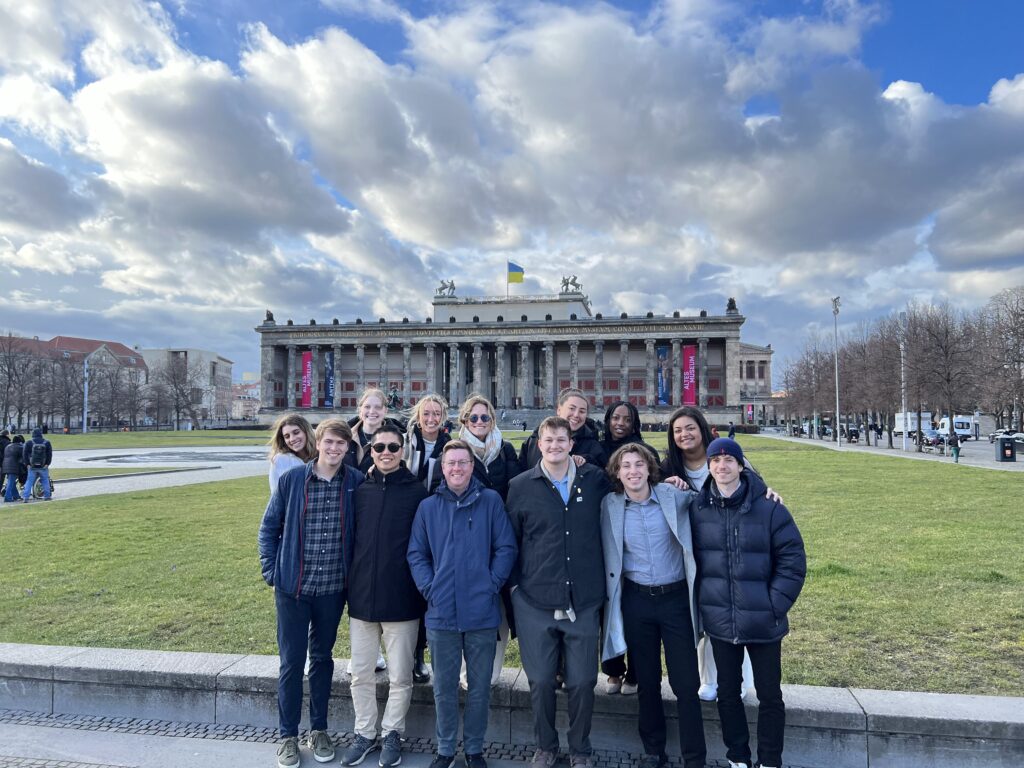
After sightseeing the group had one last meeting on day four, with a leading architecture firm. The group had the pleasure of meeting with the firm CEO and founder who got his start at a large architecture firm but left to start his own. The firm we visited got its first big start with a massive German auto manufacturer. The big items discussed in this meeting were the firm’s scope of work, the timeline of projects, and the influence of ESG in building design. This meeting provided a unique insight into how property design will evolve to focus on sustainability.
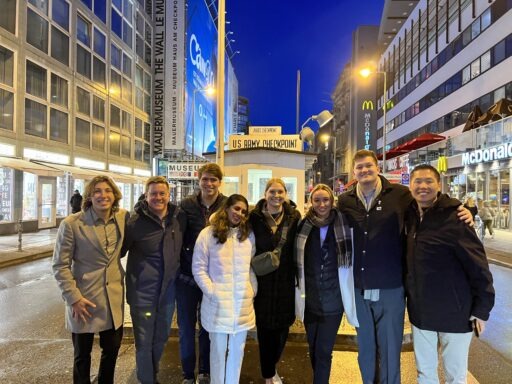
Day Five – Sightseeing & Development/PropTech Company Meeting
Day five began with a group meeting with a national developer whose focus is on sustainable development. The development company also has a sister company that specializes in sustainable property technologies. In this meeting we discussed the large headwinds facing the commercial real estate market in Europe, the EU has a goal to achieve Carbon Neutral by 2050. For this to occur the real estate will have to look fundamentally different. Older buildings will become physically obsolescent as companies will refuse to lease in a building that does not meet standards. The development company has delivered unique and iconic buildings across Europe and the United States. Throughout the meeting, we got to see different developments and the unique features associated with them. We then spent some time discussing some of the PropTech integrated into these properties and how they contribute to operating most sustainably. One example provided was a type of sensor that observes when a person enters/exits a specific space, from that data the property can efficiently operate by knowing which spaces require active lights and heating. This meeting provided the group with an exciting look into sustainable development and the efficiencies it can provide.
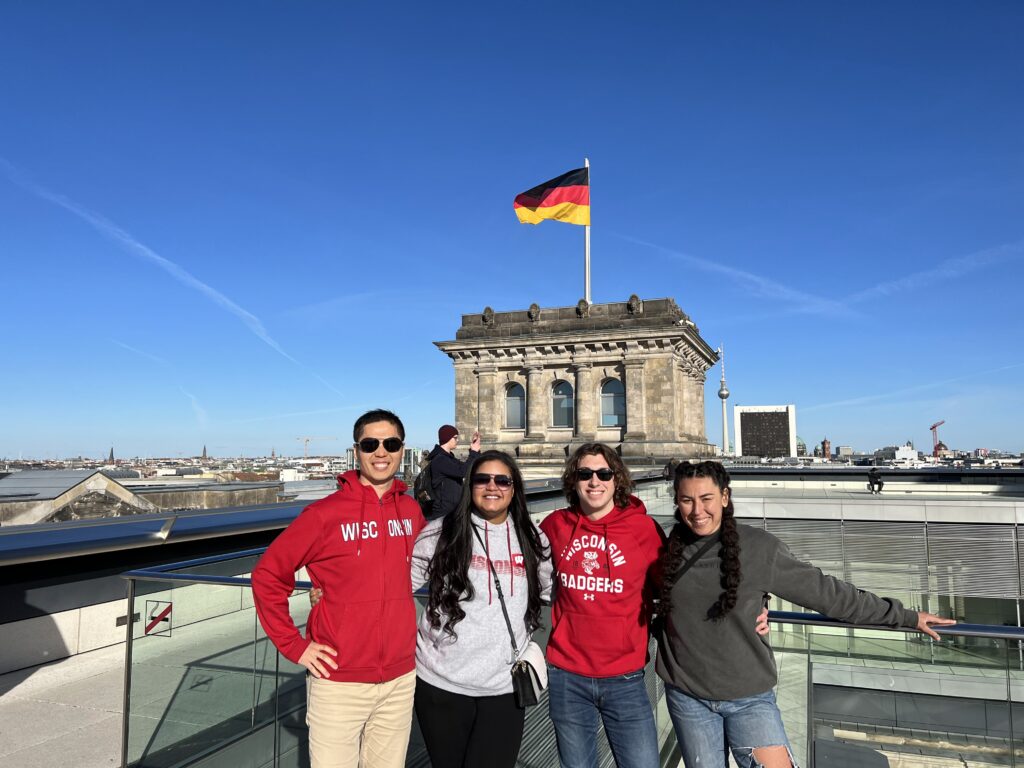
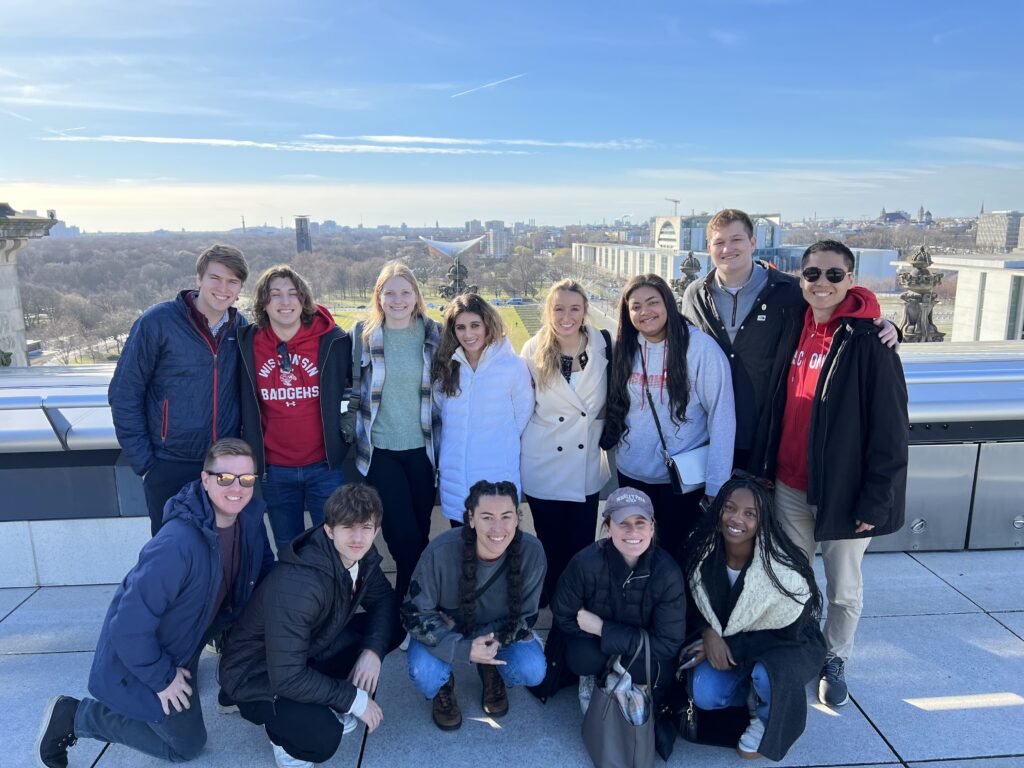
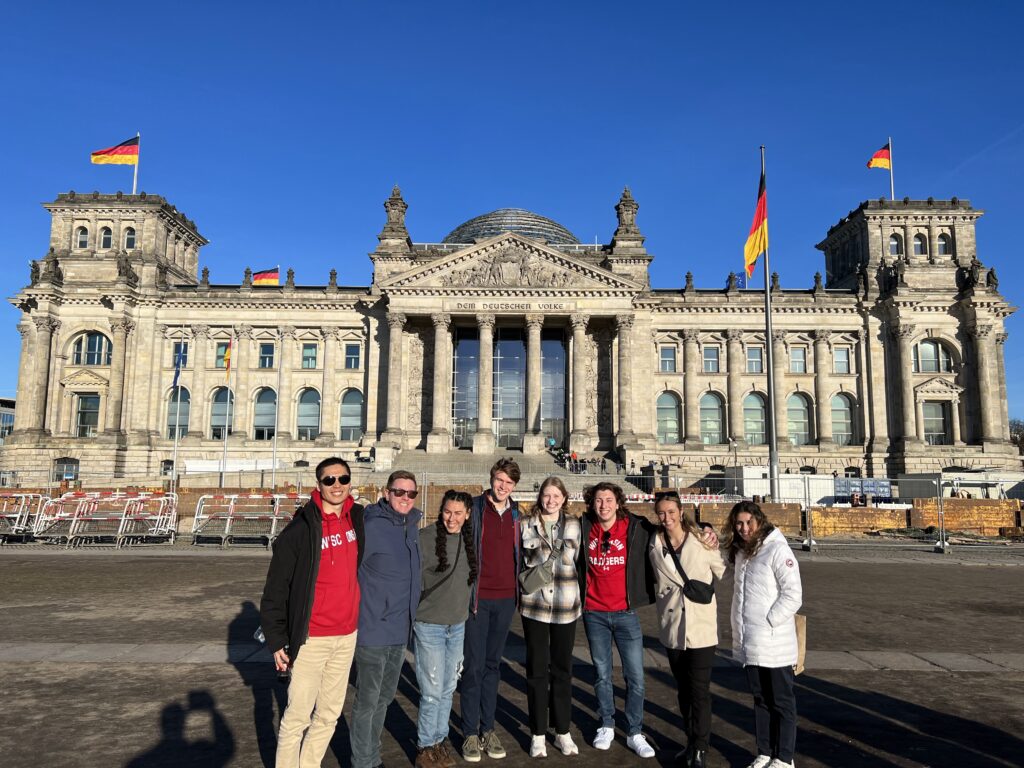
Following the meeting, the group was able to visit some more Berlin destinations such as the Brandenburg Gate, Holocaust Memorial, the Reichstag Parliament session, and the East Side Gallery. As mentioned, the group was able to observe a live session of Parliament and then visit the Dome, a large observation deck on the top of the Reichstag building which overlooked Berlin. After visiting the historical sites, the group finished their evening by having dinner at the Markthalle Neun Street Food Gallery. This was a food market for all street foods imaginable.

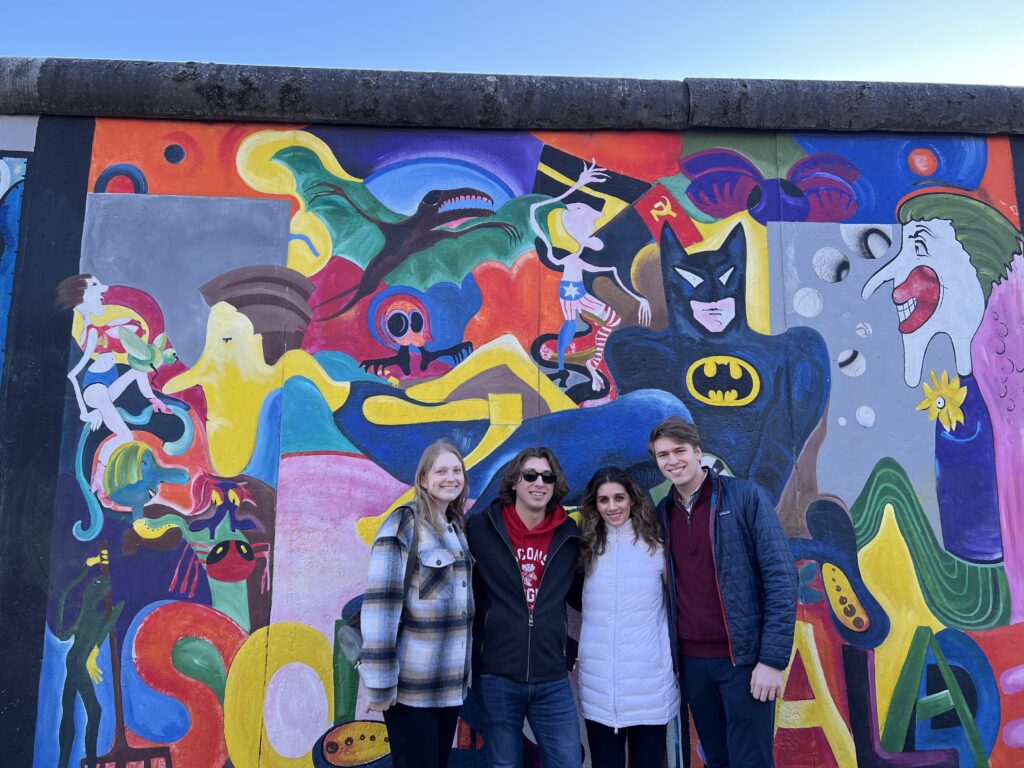
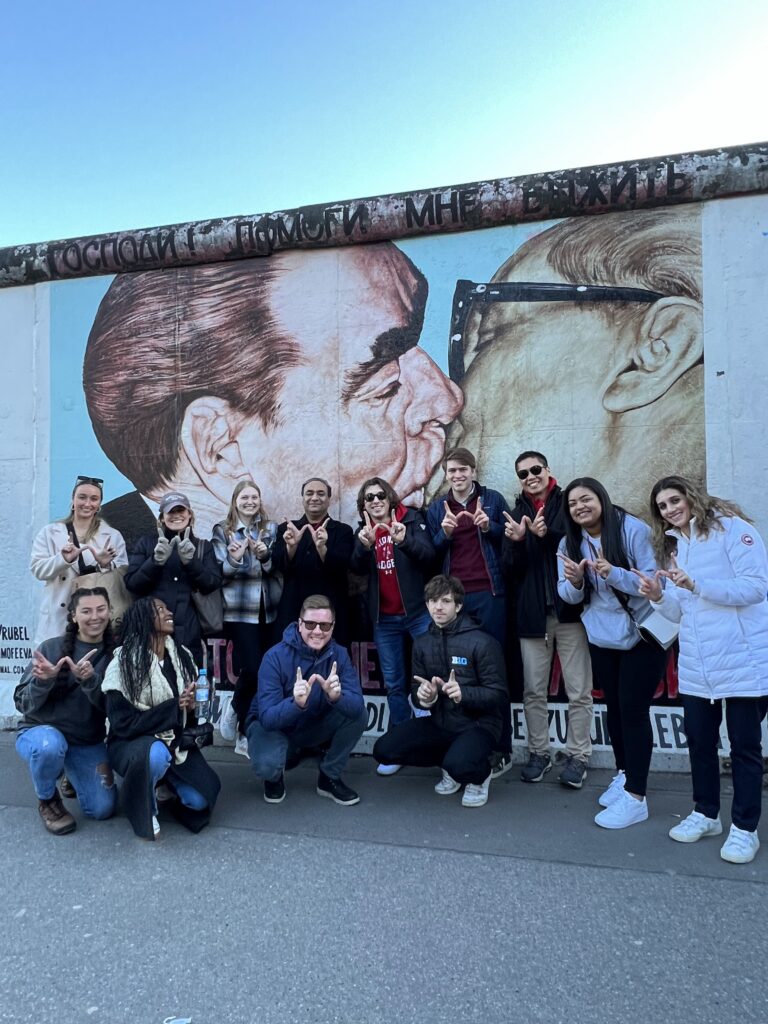
Day 6 – Potsdam & Closing Dinner
To begin the day the students had the morning free to complete any additional sightseeing in Berlin, do some gift-shopping, and have lunch before our trip to Potsdam.
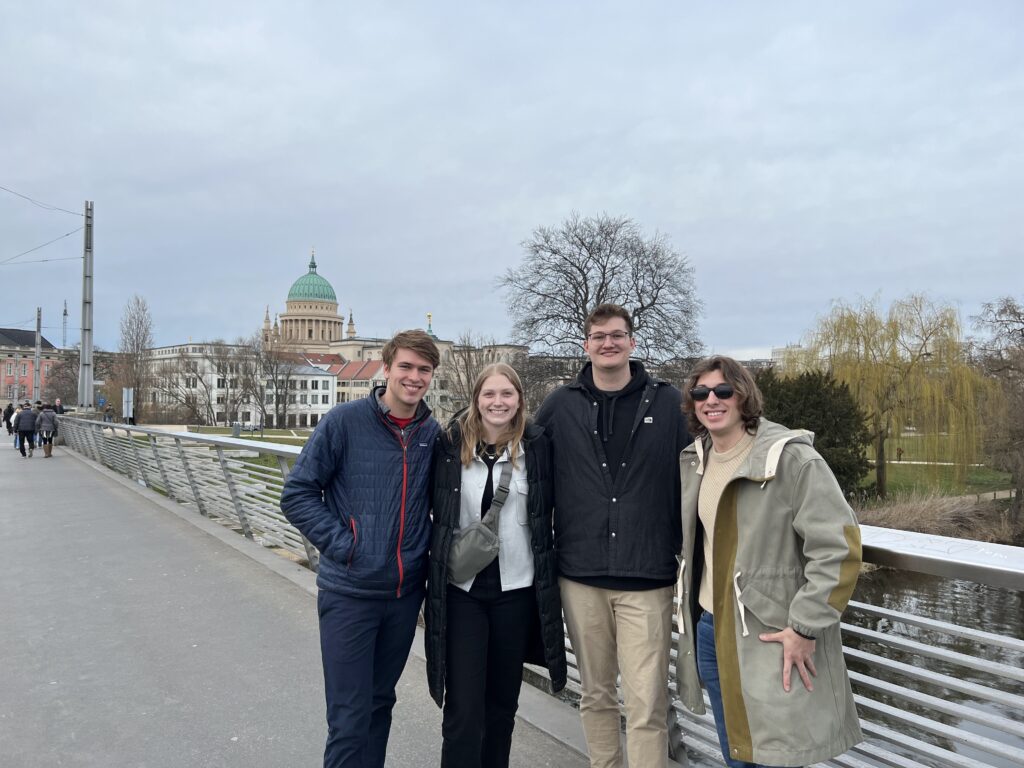
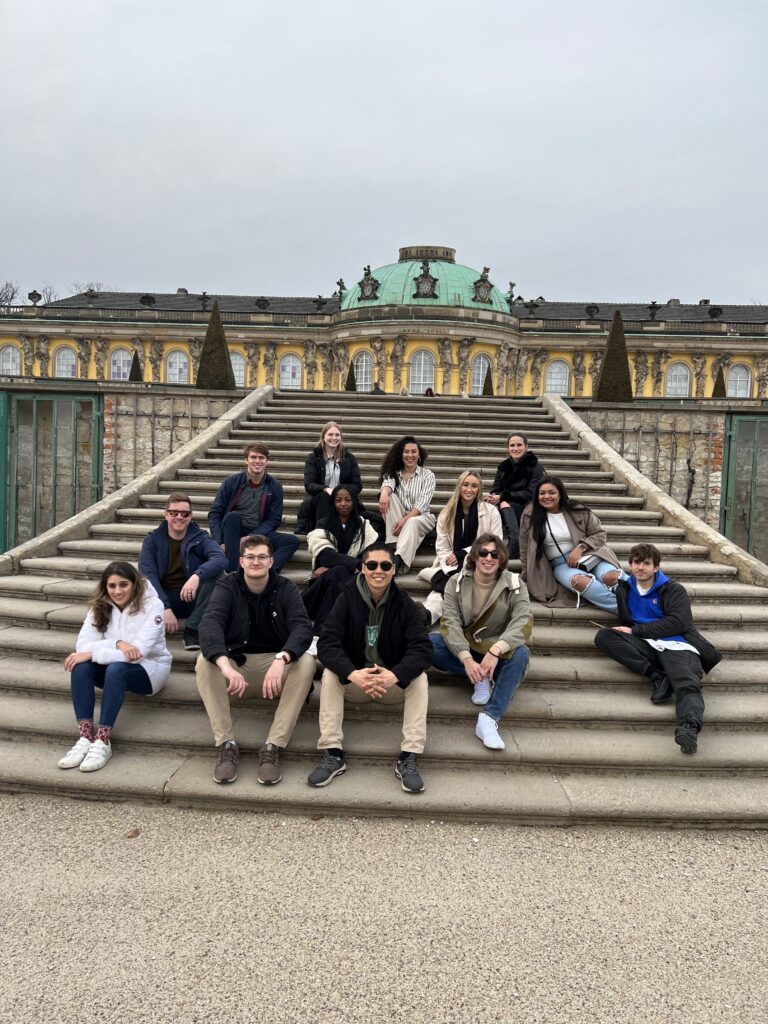
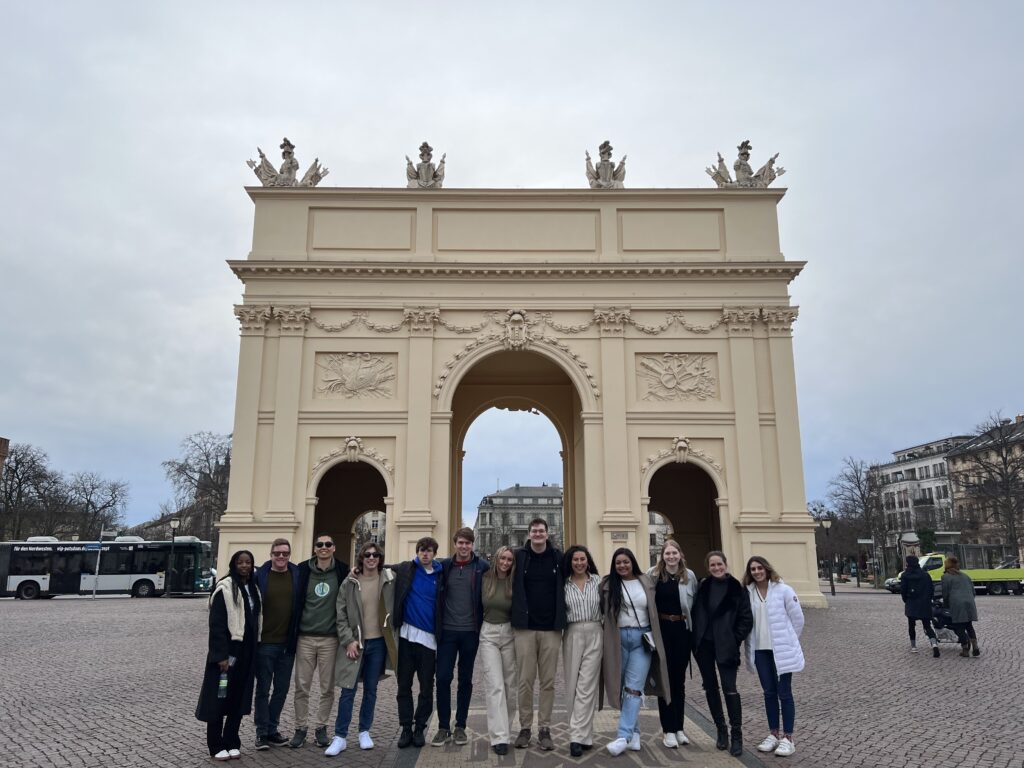
Potsdam is a smaller city neighboring Berlin with some great tourist attractions. The group walked the main street which had many local retail offerings, the main street leads to St. Nicholas Church which was originally built in the 19th century but was unfortunately destroyed in WWII, the church was reconstructed in the 1980s and is now a large attraction. The biggest draw of Potsdam was the Sanssouci Palace, constructed from 1755 to 1775, this palace was home to Frederick the Great, Prussian King. While the group was unable to tour the interior of the palace, they were able to walk the grounds and ascend the stairs from Sanssouci Park to the palace doors. As the trip was coming to a close, there was a final dinner at Sissi Restaurant, which specialized in Austrian food. The group recapped what they had learned over the last five and laughed about the memories made.
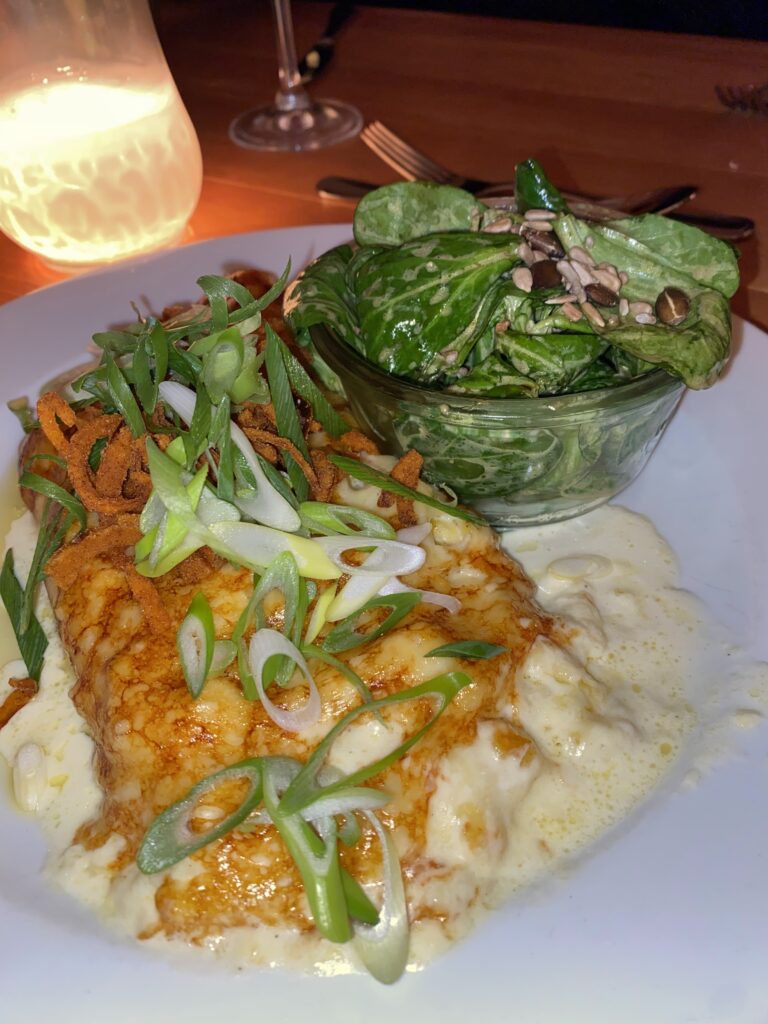
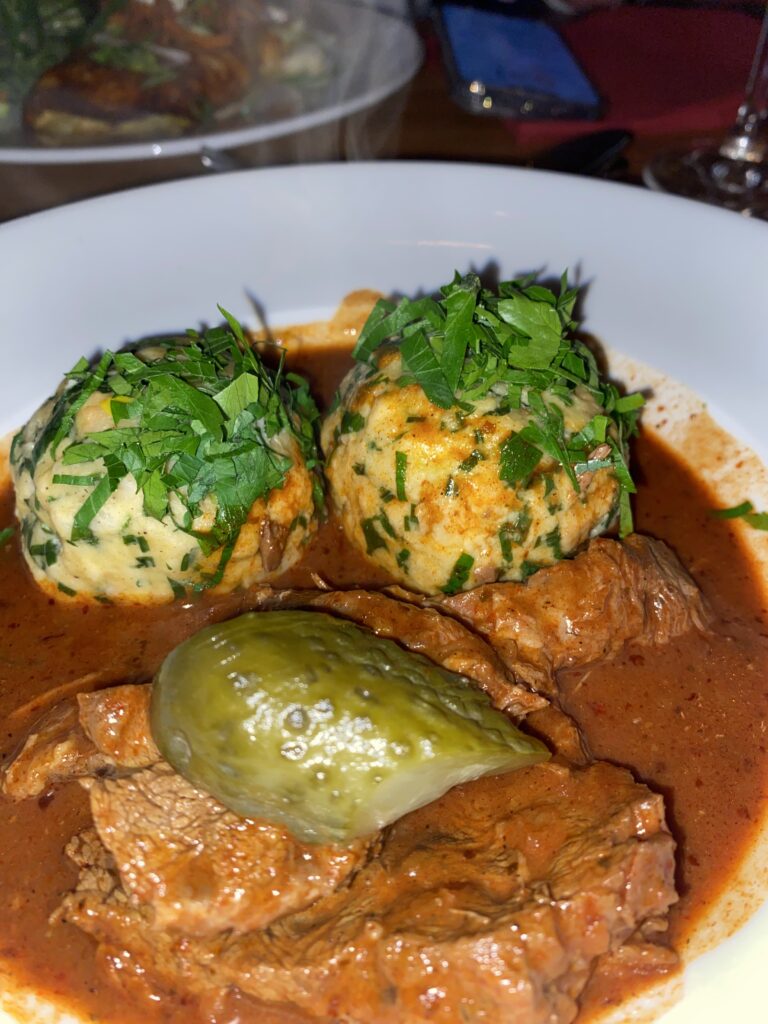
Final Day – Travel
After one last night in Berlin, the students had the opportunity to make any last-second visits in the morning before making their way to the Airport and heading back to the United States. The group was incredibly thankful for the opportunities to learn from industry leaders in Berlin, as well as expand their cultural knowledge. The memories made from this trip will last a lifetime!
